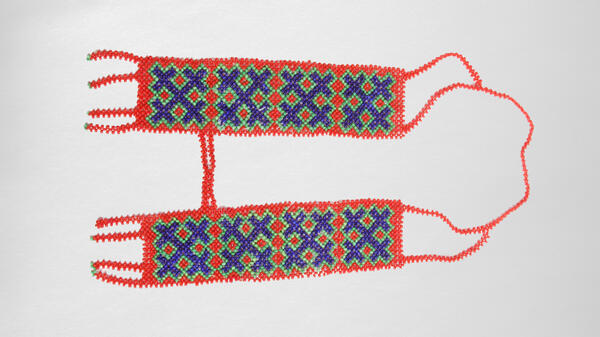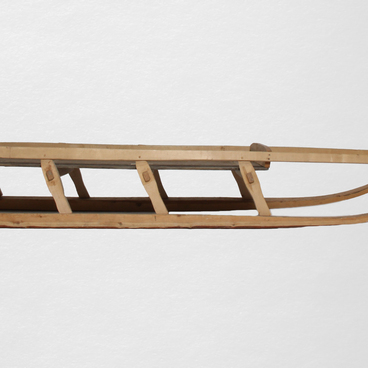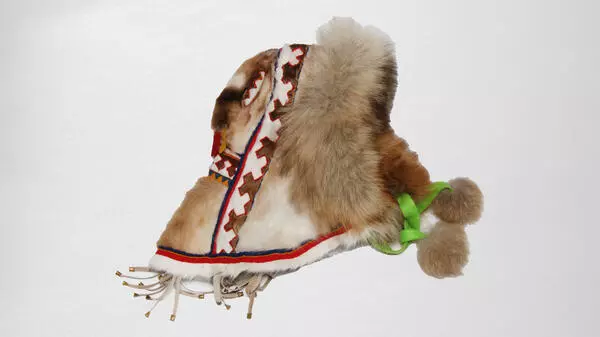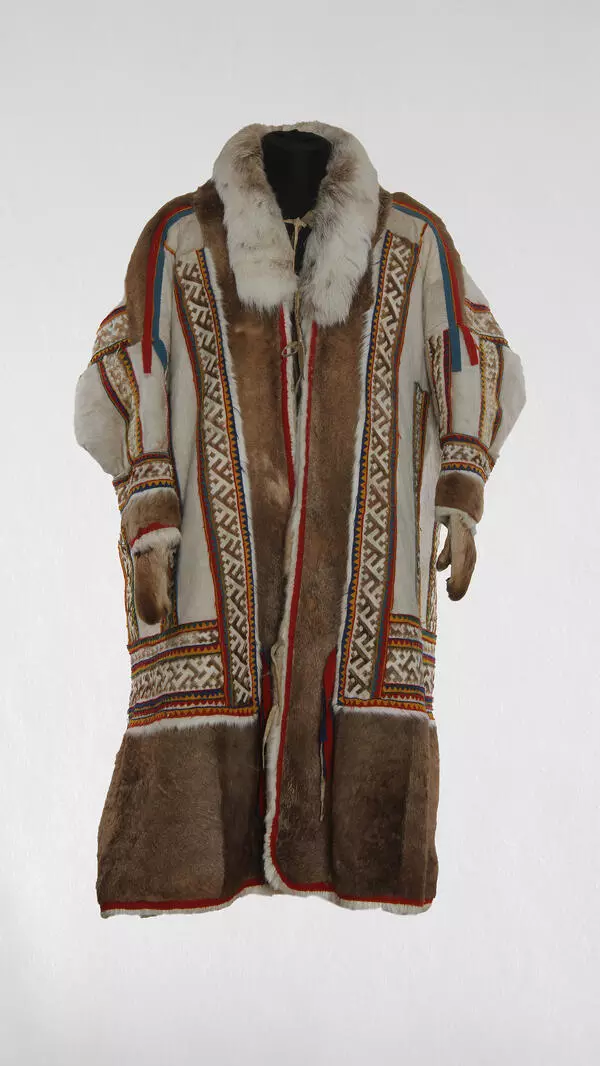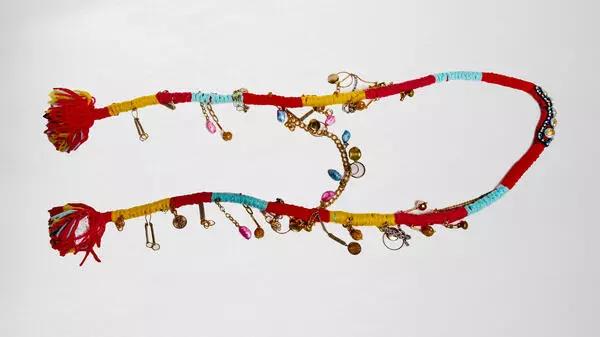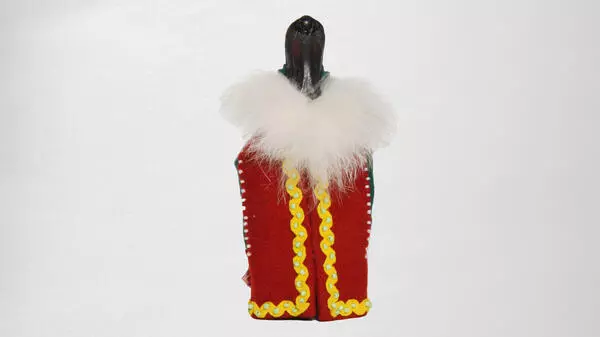The small peoples of the North loved bright clothes and created many different homemade jewelry. In the old days, clothes and household items were decorated with beads, small balls, little columns, which were carved out of mammoth bone and covered with natural dyes.
Antique beads varied in shape and color and were highly valued in the North. Beaded jewelry has been an important part of the traditional culture of northern peoples.
Khanty women sewed everyday national dresses from chintz, satin or flannel, and for festive dresses they used silk or other expensive fabrics, usually imported. The clothes were decorated with plain stripes of different materials and different colors.
Around the neck over such a dress, women always wore many beads and special women’s pectorals with a beaded geometric pattern. The most common were two types of women’s pectorals: a “mevlsak” and a “turlops”.
The Muravlenko museum houses the first type of traditional jewelry. Two openwork beaded strips of a mevlsak descended on the chest and were fastened around the neck with tendon or nettle threads. At the ends of the stripes, short pieces of colored beads or small round stamped pendants, rings, beads and bells were attached. In front, the stripes were necessarily connected with a narrow bead bridge.
The jewelry of the second type, the turlops, was a semicircular beaded mesh. The Khanty fastened the turlops to an openwork beaded strip, and the Mansi — to a strip of cotton fabric. The jewelry covered the base of the neck, and was tied at the back or fastened with a button and a loop.
In addition to individual neck jewelry, northern women weaved beaded strips, which were then sewn onto clothes, fur shoes or belts.
Khanty craftswomen preferred to make jewelry from beads of bright colors — red, blue, light blue, orange, green, yellow, white. The beads were chosen to combine contrasting colors. In the old days, thin reindeer tendon threads were used for weaving, and nowadays craftswomen use the fishing line with a diameter from 0.17 to 0.22 millimeters.
Antique beads varied in shape and color and were highly valued in the North. Beaded jewelry has been an important part of the traditional culture of northern peoples.
Khanty women sewed everyday national dresses from chintz, satin or flannel, and for festive dresses they used silk or other expensive fabrics, usually imported. The clothes were decorated with plain stripes of different materials and different colors.
Around the neck over such a dress, women always wore many beads and special women’s pectorals with a beaded geometric pattern. The most common were two types of women’s pectorals: a “mevlsak” and a “turlops”.
The Muravlenko museum houses the first type of traditional jewelry. Two openwork beaded strips of a mevlsak descended on the chest and were fastened around the neck with tendon or nettle threads. At the ends of the stripes, short pieces of colored beads or small round stamped pendants, rings, beads and bells were attached. In front, the stripes were necessarily connected with a narrow bead bridge.
The jewelry of the second type, the turlops, was a semicircular beaded mesh. The Khanty fastened the turlops to an openwork beaded strip, and the Mansi — to a strip of cotton fabric. The jewelry covered the base of the neck, and was tied at the back or fastened with a button and a loop.
In addition to individual neck jewelry, northern women weaved beaded strips, which were then sewn onto clothes, fur shoes or belts.
Khanty craftswomen preferred to make jewelry from beads of bright colors — red, blue, light blue, orange, green, yellow, white. The beads were chosen to combine contrasting colors. In the old days, thin reindeer tendon threads were used for weaving, and nowadays craftswomen use the fishing line with a diameter from 0.17 to 0.22 millimeters.

